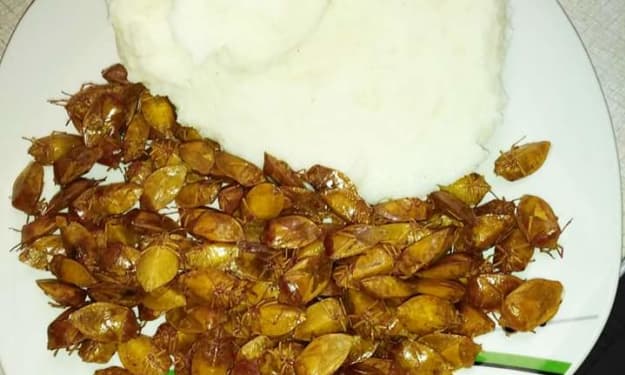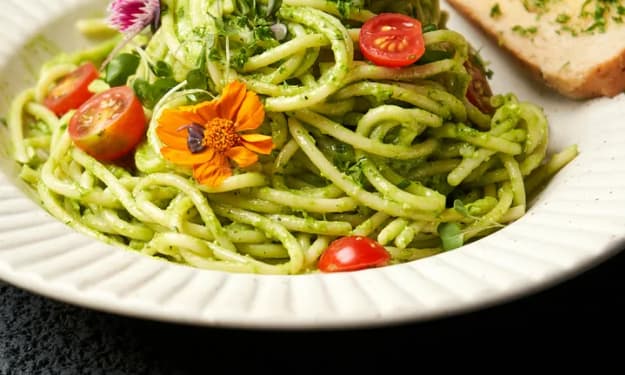corn is good for our bodies.
humans just can't get enough corn.

Can't get sufficient corn -- it is in most objects on grocery store shelves,
From chips to breakfast cereals to drinks or even infant formula.
Corn makes up round 20% of the nutrients for all human beings, worldwide.
Which makes it all of the extra unexpected that corn basically shouldn’t be suitable for eating in any respect.
Of course, it is a very professional human food now,
But, to get there, corn has needed to come a long way.
There are a whole host of reasons why corn never must were
One of the vegetation we domesticated for meals,
Much much less one of the pinnacle ten staple plants on our plates.
So, this is the unlikely story of an unassuming grass
That have become one of the heavy hitters of the human weight loss plan.
The evolution of corn, additionally referred to as maize in some elements of the world,
Is kind of a rags-to-riches tale of the meals global.
9 thousand years in the past, there changed into no corn as we understand it.
The closest thing was a grass known as teosinte
That grew in contemporary day southern Mexico.
Teosinte produces cobs which might be handiest approximately a 6th of the scale of a
Modern ear of corn, with between five and 12 kernels in line with ear that spoil apart effortlessly,
As opposed to trendy corn’s masses of kernels on a sturdy cob.
Those kernels have been puny, difficult, and actually indigestible, so the folks that
Encountered teosinte wouldn’t have afflicted with the kernels in any respect.
Because it’s an annual grass that seems exactly nothing like contemporary corn,
For a completely long term scientists were flummoxed
About where teosinte healthy in corn’s own family tree, and if it did at all.
The debates over corn’s true ancestry have become so contentious
That it became known as the corn wars.
And that battle raged for nearly half a century, until additional genetic evidence
Showed as soon as and for all that teosinte on my own become the ancestor of contemporary corn.
And thus, a corn truce changed into referred to as, and there was peace in the land.
Huzzah!
It's likely that teosinte changed into first cultivated with the aid of people across the Balsas River Valley
Of southern Mexico about 9,000 years in the past.
The teosinte plant’s stalks contain a sweet juice, form of like sugar cane.
And archaeologists assume that the stalks were the only purpose Mesoamericans
Even cultivated teosinte inside the first region, and it had not anything to do with the kernels.
The Mesoamerican humans might either bite on the stalks or juice them
To ferment the candy liquid into alcohol, due to the fact that’s additionally a component
Human beings like to do with plant life that contain sugary beverages.
Genetic research have furnished evidence that corn got here directly from teosinte,
But it's less clear how the point of interest of cultivating the plant modified from stalk to kernel.
What we do recognise is that it probable took just a few genetic adjustments to convert
The tough-shelled teosinte seeds into something that might nourish a civilization.
Through the years, the nomadic individuals who cultivated teosinte started deciding on
The traits of the vegetation they liked fine.
Subsequently, they set their sights on making the kernels
As soft and plentiful as feasible.
Every teosinte kernel is blanketed in a rock hard shell referred to as glume
That renders it basically inedible to people.
The glume on the kernels of teosinte keeps the seed intact as it travels via
An animal's digestive device or overwinters on the ground for months.
Very beneficial for the plant, but not whoever's seeking to consume it.
Historical cultivators most possibly began deciding on seeds of teosinte
With the softest glume.
These days, the glume is the part of the corn at the cob
That receives stuck between your enamel.
Every other large step in making corn out of teosinte concerned
Boosting the starch content within the kernels.
Corn is set seventy three% starch by means of weight, which is a great deal higher than teosinte’s kernels,
And it's what makes corn a excellent source of rapid energy.
Scientists nevertheless do not know loads approximately the early cultivation of corn.
They're still investigating how corn advanced more than one rows of kernels in step with ear,
And that solid cob you can clearly grab onto, amongst other matters.
These types of adjustments display us that corn as we understand it today might in no way have existed
If humans hadn’t began tinkering with it.
In reality, current corn is absolutely unable to breed with out human assist
As it doesn't have a mechanism for dispersing its seeds.
So, thanks to the painstaking paintings of those historical agriculturalists,
Humanity got a brand new, difficult-received cereal crop!
But even after corn's human architects had created a starchy, delicious grain,
More work became vital to make it as nutritious as feasible.
Because, don't forget -- corn changed into by no means the nice candidate for meals within the first location.
To this day, corn is many of the least nutritious staple vegetation.
Although it includes a number of the vitamins we want, a few of the nutrients
Aren't in a form that may be absorbed by way of the human body.
However the pre-Colombian humans of Mesoamerica who cultivated corn also invented
A process called nixtamalization, which grew to become corn into more than only a side dish,
And allowed it to be the basis of hundreds of thousands of humans’s diets.
Nixtamalization involves cooking after which steeping the corn kernels
In an alkaline solution of water and wooden ash.
After the cooking technique, the kernels are washed multiple instances
To cast off the outer shell of the kernels, as well as extra alkaline solution.
The result is a slurry referred to as nixtamal, which was floor right into a gentle dough
That could be used to make matters like tortillas and tamales.
And it seems that treating it with calcium hydroxide
Wasn’t simply making it taste higher.
It become unlocking vitamins that could store lives.
See, nixtamalization solved a lot of the dietary issues
With corn that we cited.
It will increase the dietary fiber, calcium, and the bioavailability of iron within the grain,
Meaning how plenty of it you could really absorb.
But most importantly, it also will increase the bioavailability of niacin,
Additionally known as diet B3.
Niacin is a coenzyme, this means that it’s vital
For the capabilities of different enzymes inside the body.
It's instrumental in turning food into strength, making fats and cholesterol,
And creating and repairing DNA, amongst different vital obligations.
Whilst Europeans came to Mesoamerica,
They started out consuming corn, and brought it again to Europe with them.
But when it became broadly eaten as a staple crop there,
Those growing and eating it skipped the nixtamalization component.
As a end result, they got here down with a sickness referred to as pellagra,
That's an unpleasant combination of diarrhea, skin rashes, mouth sores and dementia.
And the wrongdoer became a loss of niacin.
Now, to be clean, it's perfectly exceptional to devour corn that hasn’t been nixtamalized.
We do it all of the time.
I imply, who doesn’t love corn at the cob?
Pellagra is only a subject if you aren’t getting your niacin from another parts
Of your weight-reduction plan, like, say, if you’re simplest eating corn that wasn’t nixtamalized.
This means that, if the Mesoamericans who cultivated corn
Didn’t additionally invent nixtamalization, consuming ordinarily corn could have made them ill,
So it never ought to have emerge as foundational to their diets.
And in turn, it never would have come to be this type of huge part of ours.
It become in opposition to all odds that corn have become edible, and then ample,
After which yummy and nutritious.
About the Creator
Reader insights
Outstanding
Excellent work. Looking forward to reading more!
Top insight
Eye opening
Niche topic & fresh perspectives





Comments
There are no comments for this story
Be the first to respond and start the conversation.